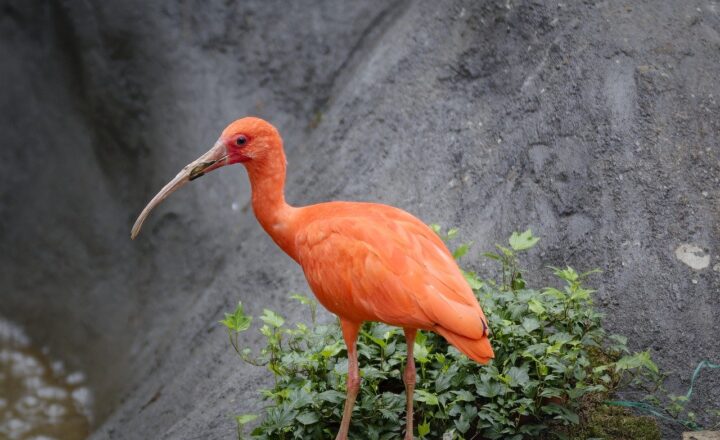The Ice Age Megafauna: Why Mammoths, Saber-Toothed Cats, and Other Giants Thrived
November 14, 2024

The Ice Age, a period that spanned from approximately 2.4 million years ago to around 11,700 years ago, was a time of remarkable climatic shifts and environmental changes. During this epoch, Earth was dominated by majestic creatures known collectively as megafauna—massive mammals like mammoths, saber-toothed cats, giant ground sloths, and woolly rhinoceroses roamed the landscape. This article delves into the fascinating world of Ice Age megafauna, exploring why these giants thrived in a world shaped by ice and challenges.
1. What is Megafauna?
Megafauna refers to large animals, typically defined as those that weigh over 44 kilograms (97 pounds). The Ice Age saw an abundance of such creatures, adapted to the cold, harsh environments of the time. Examples of iconic Ice Age megafauna include:
- Mammoths: These large, hairy relatives of today’s elephants were perfectly adapted to cold climates with their thick coats of fur and layers of fat for insulation.
- Saber-Toothed Cats: Known for their elongated canine teeth, these fierce predators were agile hunters, preying upon large herbivores.
- Giant Ground Sloths: Herbivorous giants that could grow up to the size of a small elephant, existing primarily in South America.
- Woolly Rhinoceroses: Thrived in cold tundra environments, adapted with thick fur and a warm layer of fat to withstand the freezing temperatures.
Understanding these creatures and their adaptations is vital to learning why they thrived during the Ice Age.
2. Climate and Habitat: The Stage for Giants
The Ice Age was marked by recurrent glacial cycles and interglacial periods, leading to a dynamic and diverse habitat across the globe. The immense climate shifts favored the evolution and survival of megafauna.
– Cold Deserts and Tundras: Large herbivores such as mammoths and woolly rhinoceroses thrived in the cold, dry environments that characterized much of the northern hemisphere. Their thick fur and subcutaneous fat enabled them to withstand frigid conditions, while their large size helped reduce heat loss.
– Rich Flora: During the Ice Age, tundra and steppe vegetation dominated, providing ample food sources for herbivores. Grasses, shrubs, and other vegetation adapted to cold conditions flourished, supporting vast herds of megafauna.
– Predator-Prey Dynamics: With abundant herbivores, predators like saber-toothed cats enjoyed plentiful hunting grounds. The presence of these key species created a balanced ecosystem, allowing megafauna populations to thrive.
The Ice Age environment nurtured a unique ecology where giants reign.
3. Adaptations for Survival
The successful survival of megafauna during the Ice Age can be attributed to several critical adaptations:
– Insulation Features: Mammoths had thick fur and a double-layered coat. Their insulation minimized heat loss in subzero temperatures, while their large ears helped regulate body temperature.
– Massive Size and Weight: Large body size provided advantages against predation and competitive herbivores. Territorial displays and physical dominance were often enough to deter threats.
– Behavioural Adaptations: Megafauna often migrated to find food and suitable climates. Their migratory patterns were influenced by seasonal changes, ensuring a reliable food supply year-round.
– Dietary Preferences: Many megafauna were specialists, allowing them to maximize food quality and reduce competition. For example, woolly mammoths were grazers of tough grasses, while some species of giant ground sloths adapted to browse leaves and trees.
These adaptations defined their success and survival in a challenging climate.
4. Human Interaction: Friends or Foes?
As humans emerged as omnivores and skilled hunters, they began to interact with megafauna for various reasons:
– Hunting Practices: Early humans hunted megafauna for food, materials, and tools. The sheer size of these animals enabled significant resource acquisition, fostering survival and community growth.
– Cultural Significance: Megafauna were often revered in early cultures and played a role in mythology and tradition. Cave paintings of mammoths and saber-toothed cats show that these interactions were not just practical but also symbolic.
– Environmental Impact: Over time, humans’ hunting practices and environmental changes contributed to the decline of megafauna populations. As a consequence of human expansion and climate change, many species experienced dramatic declines, leading to eventual extinction.
The delicate balance between humans and megafauna was deeply intertwined, allowing for mutual influence.
5. The Great Extinction: The End of the Giants
By the end of the Ice Age, around 10,000 years ago, many megafauna species faced extinction. Various factors contributed to this phenomenon:
– Climate Change: Warming temperatures at the end of the last Ice Age transformed habitats, changing ecosystems dramatically. Many large species could not adapt quickly enough to new conditions.
– Overhunting: Human populations grew and transitioned to more effective hunting techniques. The combination of advanced tools and increased hunting pressure led to the decline of megafauna.
– Habitat Reduction: Environments that once supported giant mammals were modified, leading to the fragmentation of habitats and loss of necessary resources.
The extinction of megafauna marked the end of an era and left a profound impact on ecosystems and human cultures.
6. Conclusion: Learning from the Past
The Ice Age megafauna serves as a crucial chapter in the story of life on Earth. Their adaptations to extreme environments highlight the resilience of life, yet their ultimate demise sheds light on humanity’s influence on ecosystems. As we navigate contemporary challenges related to biodiversity loss and climate change, understanding the history of these giants can inform our decisions and responsibilities as stewards of the planet.
In respecting the legacies of Ice Age creatures, we are reminded of the importance of preserving our planet’s biodiversity for future generations to witness and appreciate the wonders of life.
This illuminating exploration into the realm of Ice Age megafauna not only showcases the incredible adaptations that allowed these giants to thrive but also challenges us to reflect on our impact upon the world around us.








